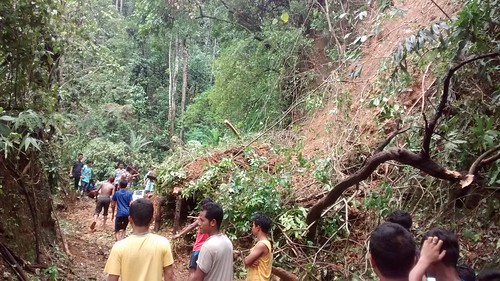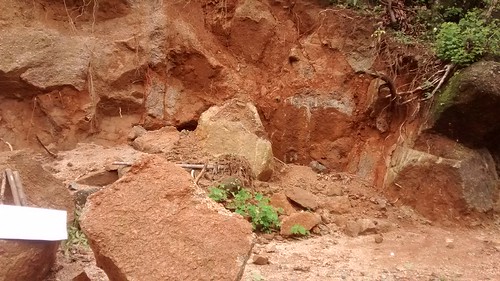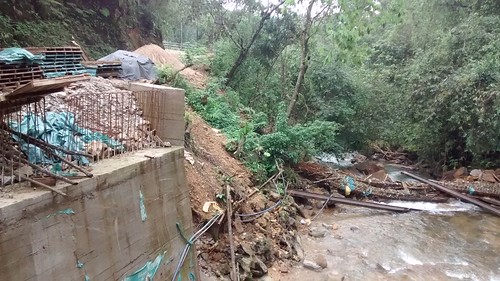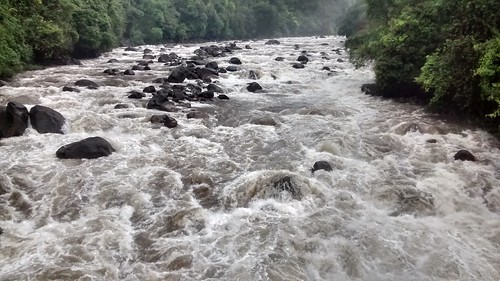By Amit Kumar, TwoCircles.net
Shnonpdeng: When a resident of Shnonpdeng, West Jaintia Hills, Meghalaya, looks at rain and says, “This is unprecedented,” you have to stand up and take notice.
There may not be many places in India where rain is not an exception; rather the norm. For the residents of this picturesque village loacted on the banks of Umngot and Amkshar River, the first rains of April seemed nothing out of the ordinary: it always rains in April, like it does every month. However, the rains in Aptil last about a week, or 10 days distributed over the entire month and the Umngot, famous for its crystal clear water, remains so despite a slight pick-up in water volumes.

All such predictions, calculations and opinions have been swept off this year.
The entire region of West Jaintia Hills, and especially the region around Amlarem, has been battered by incessant rains that have been now been continuing for almost three weeks. Even long-time residents have never seen such rains in April, and say this is the pattern from June onwards, when the Monsoon arrives. This change in weather has left the locals confused and counting the damage, which has been heavy.

For residents of another village, Am Koi, the unseasonal rains have added more misery to their perilous existence. The village can be reached via Shnonpdeng or via Nom Bereng. However, the way through Shnonpdeng is a 7 km uphill trek over algae-covered, which can be a challenge even during the dry seasons. Due to the rains however, the trek has become extremely dangerous and it can take up to 2 hours to reach the village. The residents, mostly cultivators of beetle leaf and nuts, say that more than coming to Am Koi, leaving the town is more dangerous because the downhill trek is even more dangerous due to the extremely slippery terrain. The lack of even the most basic dispensary means that every time there is a medical emergency, the situation can get pretty grim: in February, a lady from the village who was sick had to be carried on a makeshift stretcher in the middle of the night to Shnonpdeng before being taken to Dauki, the closest town.

In light of these issues, the local administration decided to make a road connecting Am Koi to Nom Bereng, which is about 21 kms from Amlarem, the closest town. However, again due to the unseasonal rains, the under-construction 4km stretch has been left completely ruined and has caused at least two landslides in the past month, extensively damaging the local flora, especially the jackfruit trees and the beetle nut trees. Arit Pohktai, a resident of Am Koi, told Twocircles.net, “The damage to the trees has greatly affected our livelihoods and if this is the condition in April, I wonder what will happen in the Monsoon season. Also, I doubt that the road connecting our village to Nom Bereng will be completed, so the landslides are only going to increase.”

The rains have had taken a huge toll on the electricity network in the region, with residents of Dauki town reporting that they have had no electricity for the past three weeks. In Shnonpdeng, there had been electricity cuts for weeks; in Am Koi, it had been gone for a year.
Saturday night rain adds more misery
As we headed back to Shnonpdeng from Am Koi, we had little idea of what was to follow: for most of the afternoon on Saturday, it had been raining heavily across the villages around Amlarem, but as we crossed a 40- year old bridge over Amkshar to enter Shnonpdeng, it had been reduced to a light drizzle. A bunch of tourists from Shillong stood under their umbrellas, watching the river. All this was soon forgotten; the lull had been replaced by a downpour that the locals hadn’t seen in a long time and most certainly never in April: this is a season when the Mangoes in the village ripen under the sun.

Instead, on Saturday evening, the heaviest downpour in recent times was accompanied by winds that tore through plantations and tin roofs. By 11 PM, the water from the river had all but entered the village and all the steps in the village resembled cascading waterfalls. By Sunday morning, the damage was revealed: four landslides between a space of a 2 km stretch on the road between Dauki and Shnonpdeng. Yallam, a local resident and a beetle nut farmer, said he had lost almost 15℅ of his plantations before the Saturday rainfall. “I am scared thinking what the condition would be today. In less than a month, we have lost probably more than 20℅ of our plantations,” he told Twocircles.net. Apart from Shnonpdeng, heavy damage was also reported from the villages of Am Koi, Nom Bereng, Darrang and Padu villages and according to the locals one person had died due to last night’s rain.
The residents of this village along with all the other villages in West Jaintia Hills are hoping that the rains subside and come back in June, but given what has happened in April, no one wants to take a guess. For now, they can only hope.
